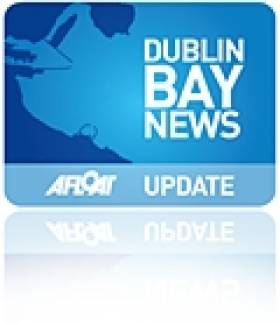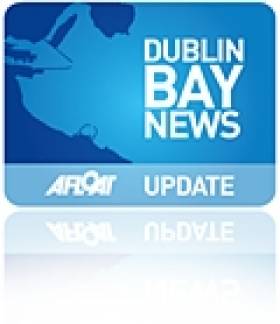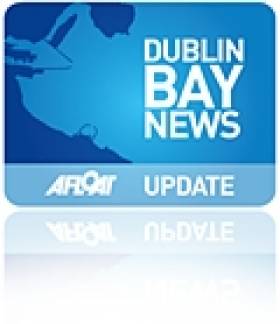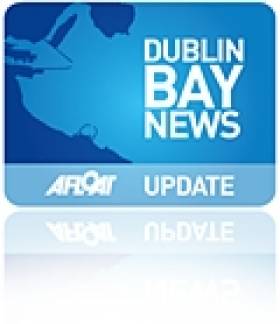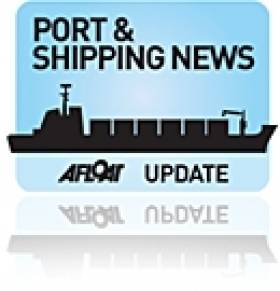Displaying items by tag: master plan
Pam Kearney Resigns From Dun Laoghaire Harbour Company Board Over 'Master Plan' Dispute
#DunLaoghaire - Dun Laoghaire Harbour Company director Pam Kearney has resigned over a boardroom dispute over the company's 'master plan', according to yesterday's Sunday Business Post.
The article by Jack Horgan-Jones reports that Kearney tendered her resignation letter last week, citing concerns over "three of the four cornerstone projects" of the plan.
These were named as the diaspora centre (which was scrapped by the Government earlier this year), the cruise liner berth and the 'urban beach' planned for the East Pier.
Kearney's departure comes just weeks after Justin McKenna, Commodore of the Royal St George, also stepped down as a director over his own concerns with the cruise terminal plans.
But harbour company chief executive Gerry Dunne has denied any split in the boardroom, saying it "remains fully behind the implementation of the 2011 master plan".
The Sunday Business Post article also referenced an unpublished engineer's report commissioned by the harbour company that highlighted issues that could cost millions in repairs to the harbour's three main piers.
#DUN LAOGHAIRE NEWS - Dun Laoghaire's historic Victorian sea baths are to be replaced with a small 'urban beach' under rejuvenation plans for the harbour, the Irish Independent reports.
County councillors for Dun Laoghaire Rathdown voted on Tuesday to green light the construction of a new sea baths facility, part of the 'master plan' development proposed by the Dun Laoghaire Harbour Company that has raised the ire of the harbour's yacht clubs.
The decision is the latest in a long series of ambitious plans for the Victorian baths, which recently received a new coat of paint as part of the Dulux Let's Colour Project but have lain derelict for 15 years.
Under the new plan, all but two of the buildings on the baths site, which was built in 1843, will be demolished to make way for a new jetty and changing area, which is set to include an 'urban beach' in the future.
Only the baths pavillion and a small outbuilding will be retained for an artist's studio, a gallery and café.
The Irish Independent has more on the story HERE.
Dun Laoghaire 'Needs Master Plan To Move Harbour Forward'
In a letter to The Irish Times last week, the principal of Ireland's largest sailing school hails the introduction of the new 'master plan' for Dun Laoghaire Harbour.
Alistair Rumball, director of the Irish National Sailing School (INSS), argues that the harbour's current financial model "cannot bring us forward".
He highlights the seasonal nature of the harbour's core businesses, which include a ferry service, four private yacht clubs, the Commissioners of Irish Lights (CIL) and the public marina and boat yard.
"Due to seasonality these operations cannot financially support the harbour all year," he writes. "We need the same numbers of the public to be using harbour facilities at mid- summer as mid-winter."
Dun Laoghaire Sailing Clubs Say Future is in Leisure
Dun Laoghaire's future lies in tourism and leisure, according to a submission on the new 'master plan' for the busy harbour.
The Irish Times reports that the town's top sailing and yacht clubs, who have come together under the banner of Dun Laoghaire Combined Clubs, are putting aside their individual interests "in favour of a larger and longer-term vision for the harbour".
The clubs' submission urges a rethink on public access to both the shore and water sides of the harbour. Inprovements in linking the town with the harbour area are already a goal of the master plan.
"Properly developed with a marine tourism and leisure focus [Dun Laoghaire] can generate new and sustainable sources of income." they said.
Dun Laoghaire Combined Clubs comprises the 'big four' waterfront clubs - the National, Royal Irish, Royal St George and Dun Laoghaire Motor Yacht Club - as well as the Dublin Bay Sailing Club and the Royal Alfred Yacht Club.
The Irish Times has more on the story HERE.
Expansion Is The Only Way Says Dublin Port Chief
Trade at Dublin Port is set to more than double over the next 30 years, according to its chief executive Eamonn O'Reilly.
In an interview with The Irish Times last week, O'Reilly elaborated on the new 'master plan' for the port, which is based on an estimated trade growth to 60 million tonnes (or 2.5% annually) by 2040.
“Last year’s growth [of 6.1%] suggests to me that we need to get our planning caps on and get a solid and robust master plan in place,” said O’Reilly.
The master plan, according to the Dubin Port chief, will require expansion of the existing port by reclaiming up to 40 hectares, as well as a greater integration with bordering areas.
Previous attempts to expand have faced much opposition from conservation groups and local residents for a number of years.
O’Reilly stressed that the local community will be engaged on the issues involved before Dublin Port produces a final proposal at the end of the year.
But he also insisted that "there’s no project [that hee knows of] for port expansion that doesn’t involve reclamation", despite proposals to establish a new port at Bremore.
Read more of the Irish Times interview with Eamonn O'Reilly HERE.


























